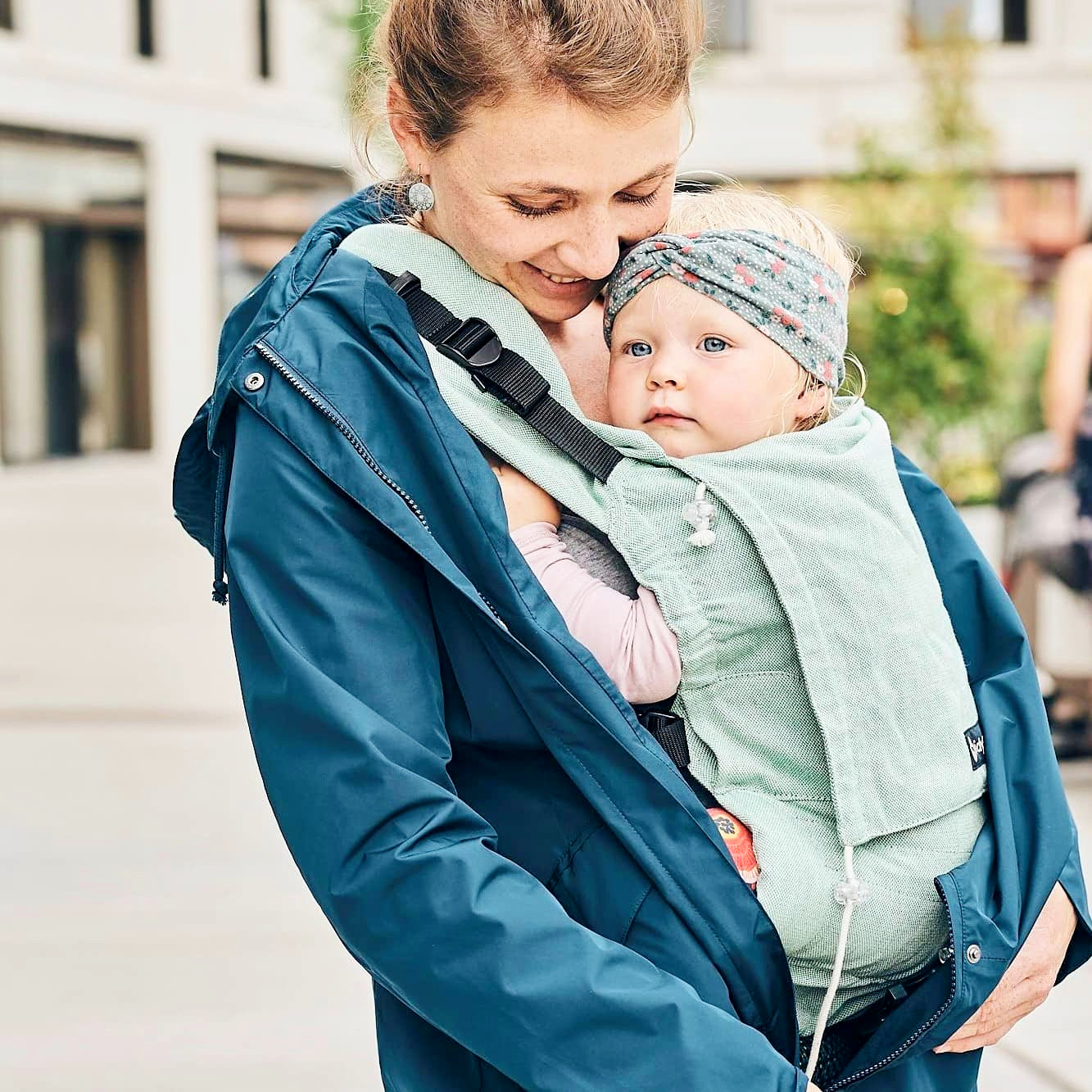Sleeping in a Baby Carrier or Wrap
 Most babies fall asleep particularly well in a wrap or carrier. But why is that, and will it become a habit that's hard to break?
Most babies fall asleep particularly well in a wrap or carrier. But why is that, and will it become a habit that's hard to break?
What Do Babies Need to Fall Sleep?
For babies to sleep well and feel secure, they need several things sorted. Firstly, physical needs like hunger or thirst should be satisfied, your baby should be free from pain, and they should be neither too hot nor too cold. And, of course, they should be tired.
Once these needs are met, your baby still requires something else: relaxation. Without relaxation, there’s no sleep. Unfortunately, the ability of (especially young) babies to regulate themselves and feel relaxed is still very limited. This is why, for most babies, the most important factor for relaxation is physical contact with a calm caregiver. Through this contact, the bonding and relaxation hormone oxytocin is transferred to your baby, helping them find their way to sleep.
How Else Does Babywearing Support Sleep?
In short: in a lot of ways. Besides the transfer of oxytocin, carrying also stimulates your baby’s basic sensory perceptions. The pressure from the carrier affects your baby’s proprioceptive sense, meaning they can feel their own body better and process stimuli from other senses more effectively.
Many babies also benefit from skin contact (tactile stimulation) and the gentle rocking motion while walking (vestibular stimulation) to help them relax. All these stimuli are very similar to those in the womb, which is why the sound of your heartbeat is also calming.
Why Does My Baby Sleep Longer in the Babycarrier Than in Bed?
Humans sleep in cycles and briefly wake up between them. (Yes, even adults do.) If everything feels safe upon waking, we drift into the next sleep cycle and usually have no memory of this moment.
From an evolutionary perspective, this makes perfect sense. A caveman in deep sleep for hours would have been easy prey. We might have even frozen to death because no one noticed the fire going out, making the cave too cold for sleep.
For helpless babies, this brief awakening is like a safety check. They quickly assess whether the situation is safe and whether their protective caregiver is nearby.
In a babycarrier or wrap, they quickly realize they are not alone. Feeling safe and secure, they smoothly transition into the next sleep phase.
Will Sleeping in the Carrier Become a Habit?
Some parents are told, "If you carry your baby to sleep, they'll never sleep any other way!"
Rest assured; this isn’t true. Generally, our babies already know multiple ways to relax and fall asleep. Other common methods include sleeping in the car, while breastfeeding, with a bottle, being carried, or in a buggy. How many of these methods does your baby know?
Additionally, I can reassure you: tiredness triggers bonding behaviour, and very few tired babies want to be put down. While your child is small, babywearing meets many of their basic needs and is therefore a great help for falling asleep. As your child grows older, their range of alternative regulation and relaxation methods will grow. So, there’s no need to worry about missing the right time to transition to a different sleep method.
You can find even more reasons to carry your child close to your body here. We are very grateful to Steffi for this great guest post!
About the author
Steffi Rolfes
Steffi Rolfes is an occupational therapist (Bachelor of Health), babywearing consultant, and sleep coach (1001 Nights). Her own three children are now "big" (at least from a babywearing and sleep perspective). With great passion, she advises families on babywearing, sleep, and crying. You can find information about her services on her website www.steffi-rolfes.de or on Instagram @tragen.schlafen.babyschreien.







